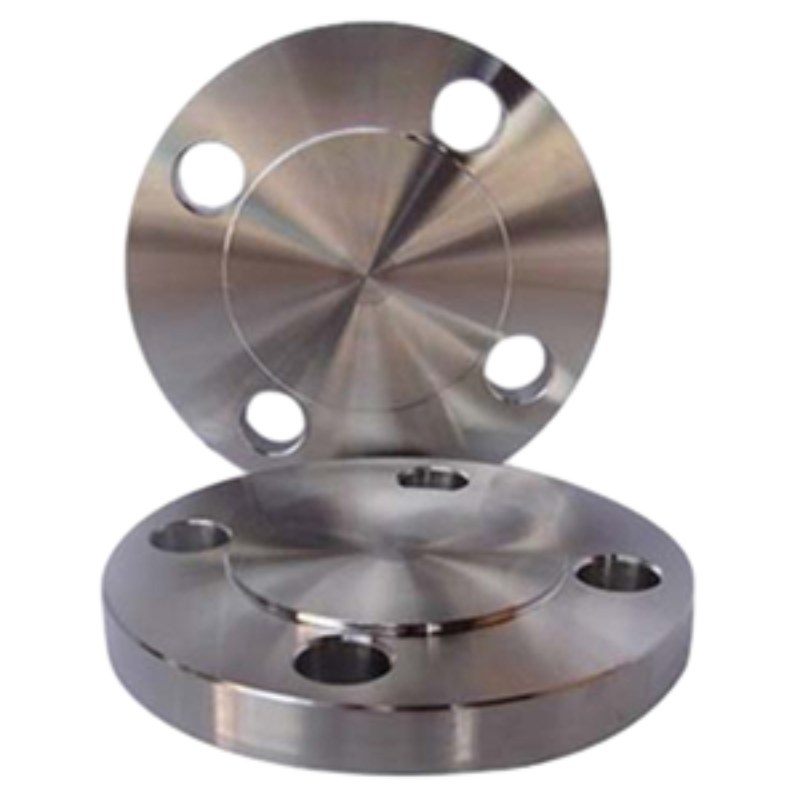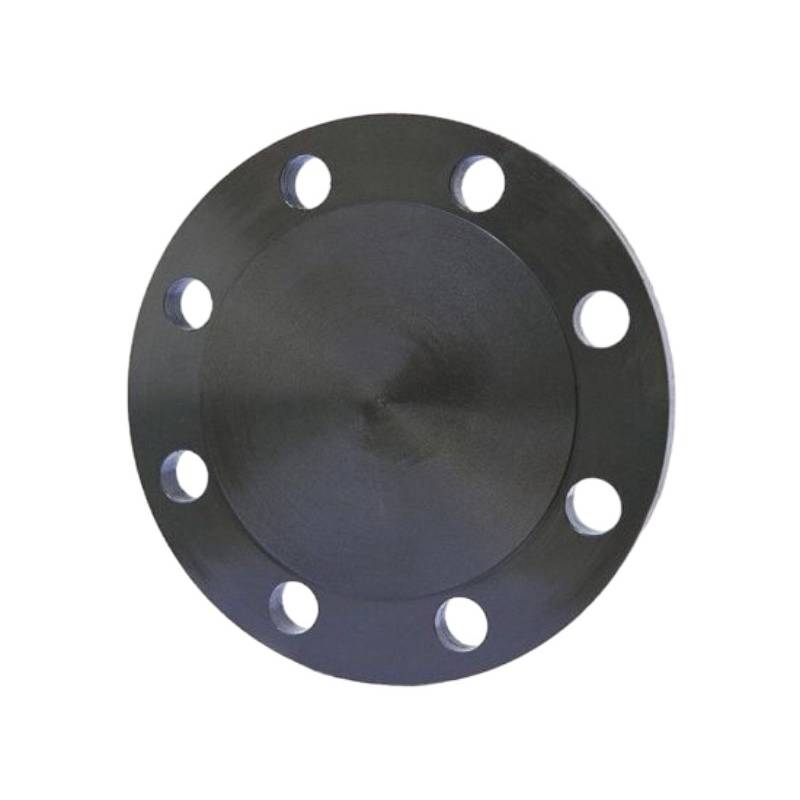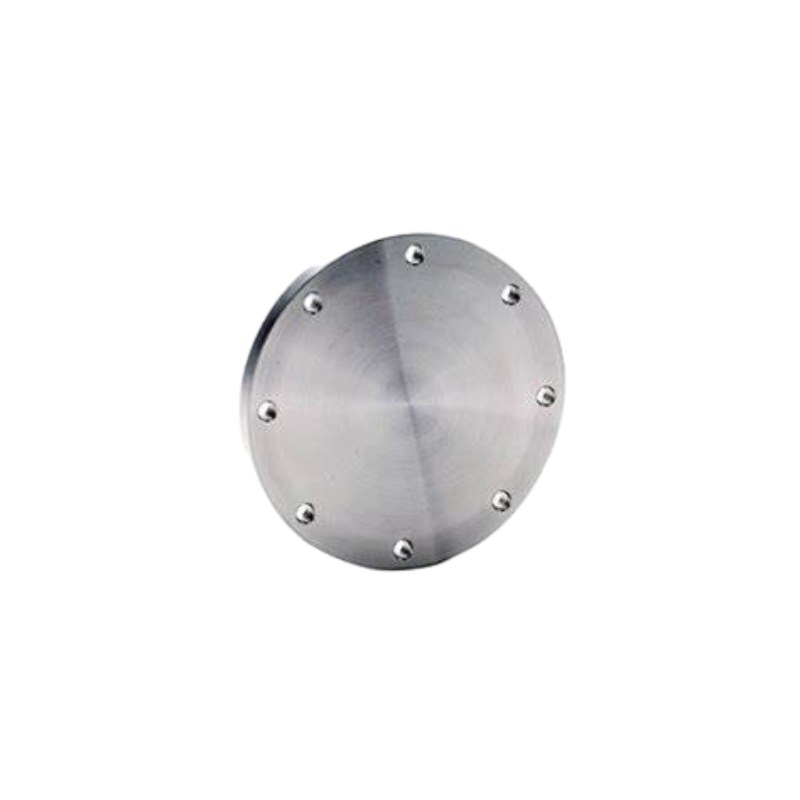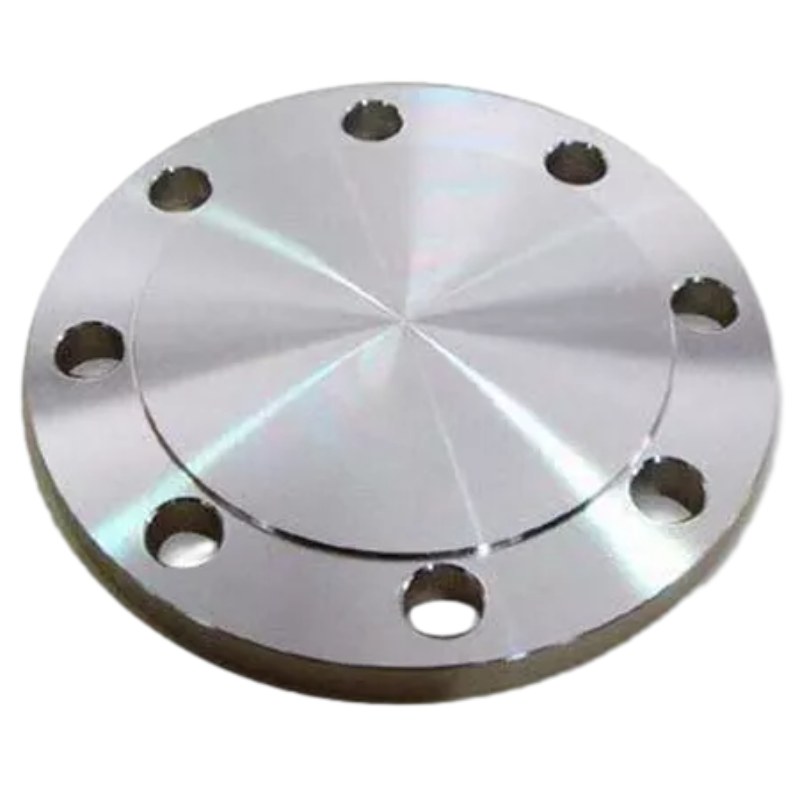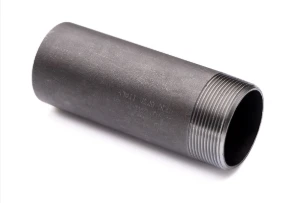-
Nhazi siri ike: The GOST 12836-67 Blind Flange na-egosipụta efere dị larịị, nke okirikiri nwere oghere bolt gbakọtara nke ọma gburugburu gburugburu. Nke a imewe na-enye ohere maka mfe itinye n'ọnọdụ na bolting na mating flange, na-enye ihe siri ike ma kwụsie ike mmechi ngwọta maka pipeing usoro.
-
Akara echekwara Mgbe etinyere ya na njedebe nke ọkpọkọ, ihu dị larịị nke GOST 12836-67 Blind Flange na-emepụta akara siri ike, na-egbochi ntanye mmiri na ịnọgide na-eguzosi ike n'ezi ihe nke usoro ọkpọkọ. Ikike mkpuchi a echekwara na-eme ka arụ ọrụ na nchekwa kacha mma, ọbụlagodi n'okpuru oke ọrụ.
-
Ngwa dịgasị iche iche: Site na refineries mmanụ na gas na ụlọ ọrụ nhazi kemịkalụ na netwọk nkesa mmiri, GOST 12836-67 Blind Flanges na-achọta ngwa dị iche iche n'ofe ụlọ ọrụ dị iche iche. Ma ejiri ya maka ebumnuche iche, nnwale nrụgide, ma ọ bụ mmechi nwa oge, flange ndị a na-enye ntụkwasị obi na ịdịte aka na sistemu ọkpọkọ dị oke mkpa.
-
Ihe owuwu na-adịgide adịgide: Ewubere site na ihe ndị dị elu dị ka carbon steel, igwe anaghị agba nchara, ma ọ bụ nchara alloy, GOST 12836-67 Flanges ìsì na-egosipụta ike na ịdịte aka pụrụ iche. A na-emezi ha ka ha nagide ọnọdụ arụ ọrụ siri ike, gụnyere gburugburu ebe na-emebi emebi, okpomọkụ dị elu, na nrụgide siri ike, na-eme ka arụmọrụ na ntụkwasị obi dị ogologo oge.
-
Injinia nkenke: GOST 12836-67 Flanges kpuru ìsì na-enweta nhazi nke ọma na usoro injinia iji zute oke nnabata akụkụ yana ihe achọrọ imecha elu. Nke a ziri ezi na-eme ka ndakọrịta na ngbanwe ya na flange ọkọlọtọ ndị ọzọ, na-eme ka ntinye enweghị nkebi na sistemu ọkpọkọ na ibelata ihe ize ndụ nke ntapu ma ọ bụ ọdịda.
-
Mfe nke nwụnye: Ịwụnye GOST 12836-67 Blind Flanges na-arụ ọrụ nke ọma na nke kwụ ọtọ, na-achọ nhazi dị mfe na bolting na njedebe ọkpọkọ. Akụkụ ha ahaziri ahazi na imewe ha na-eme ka ntinye dị mfe n'ime netwọkụ ọkpọkọ dị ugbu a, na-ebelata oge nrụnye na ụgwọ ọrụ.
Akụkụ ndị bụ isi:
- Nhazi siri ike maka mmechi echekwara
- Ejikwa ihu dị larịị mechie akara nke ọma
- Ngwa dịgasị iche iche n'ofe ụlọ ọrụ
- Ihe owuwu na-adịgide adịgide maka ịrụ ọrụ ogologo oge
- Injinia nkenke maka nnabata siri ike
- Mfe nke nrụnye na nhazi dị mfe na bolting
Material Selection for GOST 12836-67 Blind Flanges: What You Need to Know
When it comes to GOST 12836-67 blind flanges, selecting the appropriate material is crucial for ensuring functionality, safety, and longevity in various applications. GOST standards, established by the Euro-Asian Council for Standardization, Metrology and Certification, guide the specification of materials to maintain the integrity of piping systems.
Key Considerations for Material Selection:
1. Corrosion Resistance: One of the primary factors in choosing a material for GOST blind flanges is its ability to resist corrosion. Stainless steel (such as 304, and 316) is a popular choice due to its excellent resistance to oxidizing environments. For applications involving aggressive chemicals, alloys like Inconel or Monel are often considered.
2. Pressure and Temperature Rating: GOST blind flanges need to be rated for the specific pressure and temperature conditions they will face. Material selection must align with the service conditions to avoid failure. For high-pressure applications, carbon steel flanges can be suitable, provided they are properly treated or coated.
3. Weldability and Machinability: Depending on installation requirements, the selected material should offer appropriate weldability and machinability. If modifications or on-site fabrication are necessary, choosing materials that can be easily welded is essential.
4. Standards Compliance: Ensure that the materials selected comply with all relevant GOST standards. This not only guarantees quality but also maintains compatibility within the piping system.
5. Cost-effectiveness: While material selection should prioritize performance and safety, cost considerations also play a significant role, especially in large-scale projects. Finding a balance between budget and quality is essential.
Differences Between GOST 12836-67 Blind Flange and Other Flange Standards
When comparing the GOST 12836-67 blind flange with other flange standards, several key differences emerge that reflect the unique characteristics and applications of the Russian standard. The GOST (Gosudarstvennyy Standart) system is a set of regulations and guidelines that govern various industrial products, including blind flanges, which are used to seal off piping systems.
One of the primary differences lies in the dimension and pressure rating classifications. GOST 12836-67 blind flanges are specifically designed according to Russian specifications, with dimensions that may differ significantly from those outlined in ANSI, ASME, or ISO standards. For instance, while ANSI/ASME flanges are typically categorized into nominal pipe sizes (NPS) and pressure classes, GOST flanges feature a unique set of sizes and pressure ratings, making it essential for engineers to select the appropriate type based on regional standards.
Another notable difference is the material composition. The GOST standard emphasizes the use of specific materials that are suited for the harsh Russian climate and industrial requirements. While common materials such as carbon steel and stainless steel are also used in other standards, GOST may specify additional material grades to accommodate unique environmental challenges, including extreme temperatures and corrosive conditions.
Additionally, the manufacturing and testing processes for GOST 12836-67 blind flanges are subject to local industry regulations, which might include stricter quality assurance protocols compared to other international standards. This ensures that the flanges not only meet dimensional specifications but also effectively withstand the pressures and temperatures expected in typical applications within Russia.
In summary, while GOST 12836-67 blind flanges share similarities with other flange standards, their unique dimensions, material requirements, and quality assurance processes set them apart. Understanding these differences is crucial for engineers and designers when selecting flanges for specific applications in diverse geographical locations.







